In aquaculture, the level of productivity and economic efficiency of farming systems are influenced to greater extent by the quality of feed delivered to animals. The nutrients delivered through the feed are essential for promoting and maintaining the animal health, production and reproduction.
Role of Quality control in Aqua feeds
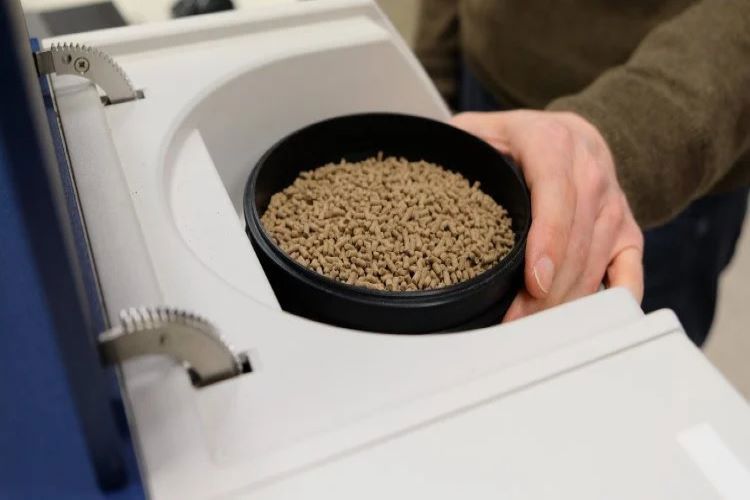
The quality of aqua feed influences the animal performance and, consequently, the nutritional quality of fish and shrimp meat that is been supplied to the consumer market; with a direct correlation of feed to food safety, considering that the managemental and farming practices are adequate.
Aquaculture feeds
The quality of aqua feed is determined by diet formulation according to nutritional requirement of the various species. The pelleting characteristic of raw materials are just as important as the nutritional content and need to be considered whilst formulating feeds. Production diet (Fig. 1) so produced along with its superior quality and effectiveness, must be the one that is economical to manufacture, ship, store
and broadcast to the species. Also, the physical and chemical properties of the pellets must remain intact in water (water stability) until the specie consumes it.
Fig. 1: Aqua pellets:
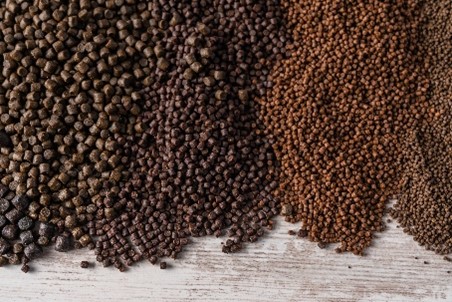
Nutritional Requirement
Aquaculture species nutrition and feeding has been directed towards the formulation of feeds with high nutritional value, high digestibility with optimal balance of nutrients to achieve maximum productivity of different species. The nutritional quality of aquaculture feeds depends on the nature and quality of the raw materials which are used in its composition, the nutritional approach adopted in the formulation of the products, as well as the equipment and manufacturing technology. The feed must necessarily contain adequate amounts of protein with essential amino acids, fat and lipids as a source of fatty acids, carbohydrates as a source of energy, vitamins and minerals and other feed supplements and additives (Fig. 2)
Fig. 2: Schematic diagram of various nutrient requirements of aqua
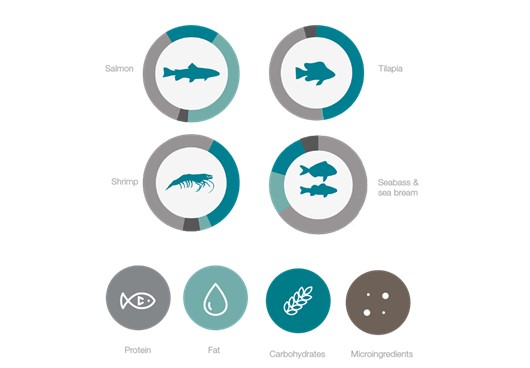
Quality Control (QC) measures in Aqua feed Manufacturing
Assessing and monitoring the nutritional quality is the first most essential quality parameter in feed manufacturing. A robust and stringent nutritional quality check from raw material to final product will ensure a consistent quality in nutritional parameters. Proximate analysis (analysis of moisture, protein, fat, starch, fibre and ash) is the primary quality check for raw materials. Conventional method for proximate analysis employs labor intensive and time consuming wet chemical analysis. The analysis employs several chemicals which are not environmental friendly. Advances in spectroscopy in biochemical analysis has led to the development of near infrared reflectance spectroscopy (NIRS) application in feed industry. Robust, reliable and authentic calibrations need to be developed for the analysis of proximate principles using wet chemistry analysis as primary calibration sources.
Near Infrared Reflectance spectroscopy (NIRS)
NIRS is an accurate and rapid analysis method that is well suited for quantitative determination of nutrients in feed ingredients and finished feed (Fig. 3). NIR technology has rapidly gained momentum over the past few years and nowadays, NIR is most reliable QC technique which is used by many aqua feed mills for determining the quality of fish meal, fish oil, soya bean meal, meat meal and various other raw materials which are used for production of aqua feeds.
NIR instruments are highly versatile and can measure all the samples and the nutritional parameters that are organic in nature, provided the calibrations that are been developed are strong and variable enough, to account for any type of raw material variant to be analyzed. It should therefore be possible to measure protein, moisture, fat, ash, fiber and many more parameters in less than a minute. The quick determination of nutrient content of the raw material enables faster decision-making process with respect to supplier mapping and monitoring. The real benefit of NIR is realized when real-time nutrients are incorporated in day-to-day formulation adjustments, which makes the diet precise with respect to nutrients and ensures product quality is optimal.
Fig.3: NIR instrument
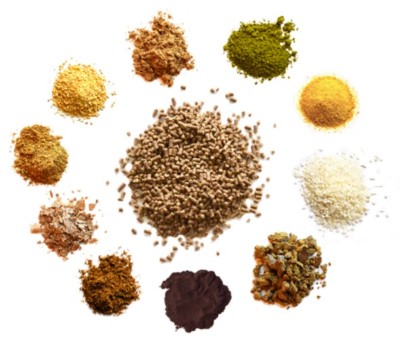
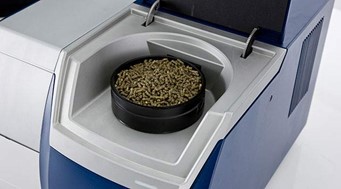
Importance of NIR Calibrations
When implementing NIR for feed analysis in the feed operations it is essential to have broad spectrum of calibrations for each raw material and finished feed. This process of building these comprehensive calibrations can take many years of development time to acquire the necessary reference data sets as per the nutritional requirements of the aquaculture species.
Skretting NIR Calibrations
NIR Instruments are installed at every Skretting plant worldwide and provide rapid, accurate analyses of feed ingredients, intermediate products and finished products. This brings in a diversity with respect to calibration of various materials, making the calibrations more robust and reliable. Skretting NIR calibrations are accredited by ISO standards, which further adds into the reliability of the data generated from NIR. Every year, Skretting analyses 600,000 samples, generating more than 3 million analytical results. Skretting Aquaculture Research Centre (ARC) is responsible for innovations, calibration development, performance monitoring and acts as a support to various Skretting plants throughout the globe.
The Skretting NIR calibrations enables the formulators to ensure apt selection of raw materials according to the nutritional requirements of species thereby delivering superior quality of finished feeds match the specifications precisely (Fig. 4). This allows our esteemed customers to receive feeds with all the features and benefits the research and product development team intended. Availability of NIR in a production facility also ensures that a consistent product (feed) has been produced from batch to batch, without any major variations.
Fig. 4: NIR in production process

The NIR advantage
The advantages of using NIR analysis is that it provides rapid analysis data, requires little sample preparation, is void of any chemicals usage and is a relatively safe technology, as against the traditional wet chemistry. It is non-destructive, operator friendly, fast (30-60 seconds), reliable, precise and a perfect tool for quality control. That said, the way the calibrations are developed, standardized and validated, play a critical role with respect to the authenticity of the results produced. As the input data originates from wet chemistry, the wet chemistry methods need to be validated by ring tests, for the NIR outputs to be strong enough (What you input, comes out – so the input is critical). NIR technology is a boon to the modern-day feed production process, wherein efficiency in each and every step plays a critical role, in optimizing the entire production value chain.
To know more connect with us at contact.india@skretting.com